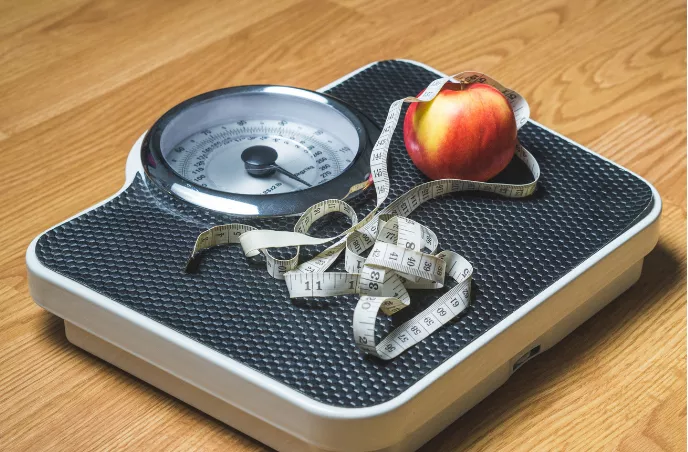We Need to Reconsider the Food We Produce and Consume
March 5, 2025

The introduction of anti-obesity medications, known as GLP-1 agonists, with brand names like Wegovy and Ozempic, may lead some to believe that the global obesity crisis is now a thing of the past. Unfortunately, however, these medications will not solve the ongoing problems created by diets that promote obesity and disease. Much of what we eat is loaded with too much sugar and salt, and ultra-processed foods continue to emerge as an important contributor to preventable morbidity and mortality.
A flurry of new findings and nutrition guidelines make critically important the need to revisit how we produce and advertise the food we consume. One target of concern is sugar-sweetened beverages. A new study published in January reported that sugar-sweetened beverages are responsible for 340,000 deaths a year because of their propensity to increase the risk for cardiovascular disease and type 2 diabetes. The study, published in the journal Nature Medicine, involved data from 184 countries and found that an estimated 2.2 million new cases of type 2 diabetes and 1.2 cases of cardiovascular disease could be attributed to sugar-sweetened beverages in 2020. The highest rates of sugar-sweetened beverage consumption were found in Latin America and some parts of Africa.
Some countries and cities have attempted to reduce sugar-sweetened beverage consumption by placing extra taxes on them. A study in five large US cities that initiated such a tax found a corresponding 33% reduction in consumption of sugar-sweetened beverages. Predictably, there is pushback from industry against taxes on sugar-sweetened beverages, although the authors of the Nature Medicine article note that “Some industry segments have initiated sugar reduction in certain products and regions. In Europe, Coca-Cola and PepsiCo have cut sugar contents by 30-50% in some products including Sprite and7-Up.” We know from the experience of raising taxes on cigarettes that this strategy can work, so more research needs to be done to understand how it could impact rates of serious illnesses like diabetes and heart disease.
Children Should Drink Only Water and Cow’s Milk
Sugar-sweetened beverages are also the topic of new recommendations for parents about what their children should drink. According to a collaboration of experts from the American Academy of Pediatrics, the Academy of Nutrition and Dietetics, the American Academy of Pediatric Dentistry, and the American Heart Association, children ages 5 to 18 should drink mostly water and plain milk. They should not drink sugar-sweetened beverages or beverages with artificial sweeteners or caffeine. The recommendations advise against giving children and teens plant-based milk products, claiming that these have insufficient protein, vitamin D, calcium, and riboflavin compared to cow’s milk. That recommendation, along with the one to avoid drinks with artificial sweeteners, drew criticism from industry sources.
It is pretty obvious to most people that soda and fruit juices contain a lot of sugar, but it is not always so easy to grasp how healthy or unhealthy the food we eat really is. To help with this, the US Food and Drug Administration (FDA) has proposed that food companies should display nutritional labels on the front of food packages. The new labels would be in the form of a black-and-white box on the front of food packages that would show the percentages of sodium, added sugar, and saturated fat present in every serving. The labels would include a rating of whether each nutrient is present in low, medium, or high levels. According to STAT News’ Sarah Todd, “Food industry trade groups appeared poised to push back on at least some elements of the proposed label, particularly the fact that it focuses exclusively on nutrients that are consumed in excess rather than also including healthy nutrients, like fiber.” Others believe the proposed labels, which are now open to public comment, will prod the food industry to make changes in the amounts of sugar, salt, and saturated fats that are present in packaged foods. It will ultimately be up to the Trump administration to decide whether the FDA’s proposed labelling will go into effect, and it will be interesting to see how the desire to protect industry profits will be balanced against the wish to decrease the US burden of chronic disease, much of which is caused by eating unhealthy food.
A New Way of Determining Obesity
How we determine when an individual’s weight does indeed pose a threat to their health is also the subject of much debate and proposed changes right now. A report published in the journal Lancet Diabetes and Endocrinology surprised many by challenging the notion that obesity is itself a chronic disease. There has been a move to regard obesity as a chronic disease in part to change the notion that it is the result of personal choice and bad habits and to reduce stigma levelled against people who are overweight or obese. But the report by an international commission of experts argues instead that “Despite evidence that some people with excess adiposity have ill health due to obesity, obesity is generally considered a harbinger of other diseases, not a disease in itself. The idea of obesity as a disease remains therefore highly controversial.” Furthermore, the report emphasizes the shortcomings of the current metric used by healthcare professionals to determine if a person has a weight issue: the body mass index or BMI. The BMI is calculated as a person’s weight divided by the square of their height. BMI has been criticized because it was normed in European white males and may lack applicability to women and people of other races and ethnicities. Furthermore, there are people who meet BMI criteria for obesity (generally a BMI over 30) but who do not have evidence of any health consequences.
The commission recommends that people with what is now considered an elevated BMI (over 25) but who are otherwise healthy should be monitored and told not to gain any more weight. This would be called “pre-clinical obesity.” Medical interventions for people with pre-clinical obesity but no weight-related health conditions would not generally be recommended. For people with one of 18 medical conditions associated with obesity medical treatment should be offered. This situation would be called “clinical obesity.” Instead of relying solely on BMI to determine obesity, the report notes that a simple way for clinicians to determine if someone has excess body fat is to measure their waist circumference. However, unlike BMI, which is easy to calculate, waist circumference measures are often performed incorrectly. It is not clear to what extent clinicians will actually add additional measures of body fat to the BMI determination in routine practice.
Not all experts are pleased with the commission’s recommendations because although imperfect, they argue, elevated BMI has been associated with serious health risks. It is easy to calculate and widely used. Also, there may be consequences to waiting until a person has health problems before offering them medical treatment for being overweight or obese. As Gina Kolata wrote in the New York Times in January, another problem with the new recommendations is that they may “have implications for the new obesity drugs and others headed to the marketplace.” Health insurance companies could use the new cut-offs to deny coverage of these medications to people who otherwise would meet traditional BMI criteria for overweight and obesity. There will surely be heated debate among nutrition experts in the coming months about these new recommendations and whether they should be widely adopted by clinical practices. There will also be strong differences of opinion about the propriety of calling obesity a chronic disease.
A New Challenge to Nutrition Research
Nutrition research is always a difficult area to pursue. Much of it relies on asking research participants to keep diaries of what they eat, and a new study shows that these self-reports are often highly inaccurate. The study found that “more than half the records in widely used nutritional survey databases…are likely wrong because people underreport what they consumed.” Although not all experts agreed on how dire the results of this study are, they do reinforce an often-raised lament of nutrition researchers about the accuracy of diet diaries. There are more accurate ways of determining what people eat than self-reported diaries, but they are more intrusive and expensive and thus impractical for large-scale studies. One new idea that might be feasible is to have people take pictures of what they eat. Software and artificial intelligence applications could then be used to estimate the nutritional content of meals. It will be interesting to see which tenets of nutritional wisdom require revision if we make significant headway in improving the accuracy of our nutrition research.
Recent research and expert opinion advise us that sugary beverages cause serious disease and should be avoided by children and teenagers. New nutrition labels—if the government decides to implement them–may help us better understand what is in the food we eat and make healthier food choices. How we determine who weighs too much and requires medical intervention is the subject of intense debate and standards may be changing, with significant implications for the way clinicians deal with weight-related problems and what health insurance companies will pay for. All of this is occurring in the context of renewed fears that much of our existing nutrition research is flawed because of the inaccuracies of food consumption reporting in research studies.
While it seems clear that we should all limit the amount of sugar, salt, saturated fats, and ultra-processed foods we eat, a lot of nutritional science and guidelines is in flux. There are important intersections between scientists, clinicians, government regulatory agencies, and industry that will determine what is in our food, how much we pay for it, and when we are considered to have a nutrition-related problem. But because so many players are involved, it is inevitable that controversies arise, resulting in conflicting advice. The risk of uncertainty here is that people will think that none of the current nutritional recommendations are worth following and continue to pursue unhealthy food choices. It is therefore critical that we continue to provide the public with the most updated information, acknowledge what we don’t know, and ensure that we make clear the things we are pretty certain are harmful. In other words, please put down that can of Coca-Cola and put away the saltshaker.
Related Posts

Anti-Obesity Drugs Complicate the Debate Over “Health at Every Size”
Posted in weight loss
How does "health at every size" fit in with the Ozempic craze? We explore how new weight loss technologies are shaping the landscape.